Most Worshipful Union Grand Lodge of Florida and the Civil Rights Movement
By Past Master Gerald Urso Assistant Chair to the Committee on Historical Matters.
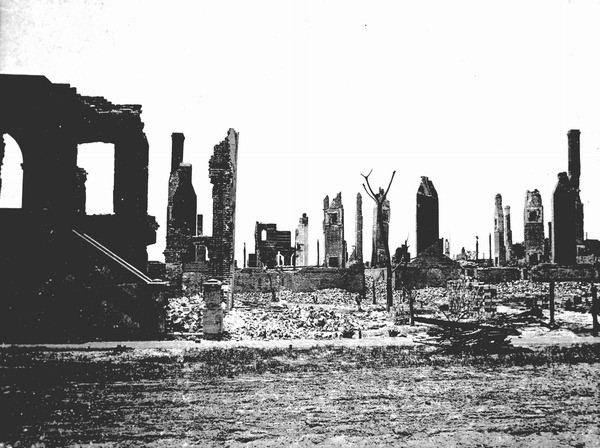
The Great Fire
May 3, 1901 Jacksonville Florida had succumbed to flames that ravaged the city. Smoke could be seen as far as Savannah Georgia to the north and Daytona Beach in the south. The fire began on the corner of Davis and Beaver St. A spark from a kitchen fire ignited a mattress factory. Most of downtown had ben engulfed in flames. By the time the fire was under control most of the entire city was destroyed. {1}
The fire initially what was known as LaVilla a neighborhood of Jacksonville, Florida and former independent city. Jacksonville’s first suburb, it was annexed by the city in 1887 and now considered part of downtown. During its height, the area was considered “the mecca for African American culture and heritage” in Florida, particularly its northern sections. It was considered “The Harlem of the South” For its restaurants and night Clubs and Jazz was sound reverberating from its borders. It was a source of immense pride for its citizens. Sunday mornings the church bells rang and the sound of Gospel filled the air.
The Grand East as it was known to the brethren of the Most Worshipful Union Grand Lodge of Florida was a source of Power. Many of its members had held Public Office and were leaders in the Church and Community. Grand Master John H. Dickerson had pleaded with Masons from all over the world for assistance. His appeal is as follows.
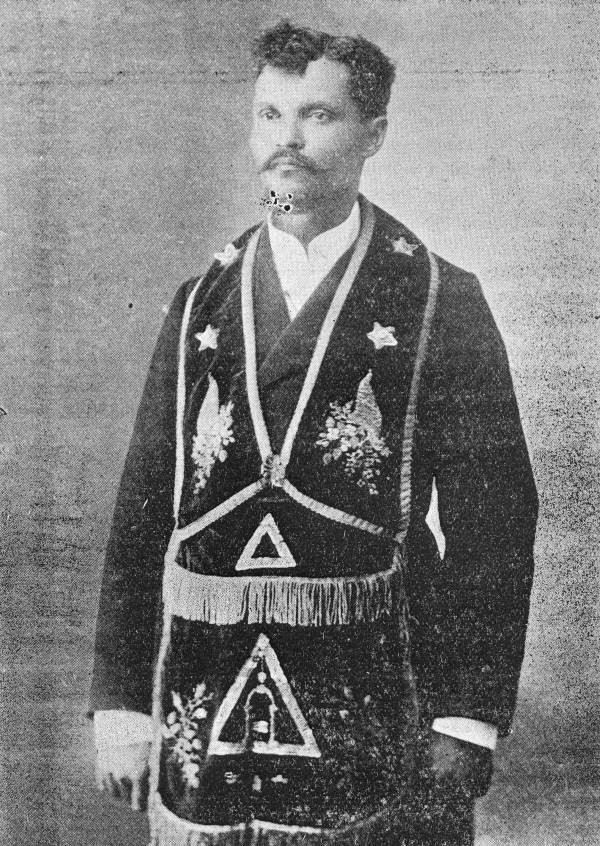
.
APPEAL OF GRAND MASTER DICKERSON TO MASONS.
“TO THE MASONIC FRATERNITY OF THE UNITED STATES AND ALL THE WORLD: Friday May 3, 1901, a great fire originated in the northwestern part of the city and in a mattress factory conducted by whites. This factory was in a colored community. The wind was high and the houses dry, and a great configuration swept in its path more than 150 solid blocks or more than two thousands acres, leaving homeless 20,000 people and destroying nearly $25,000,000 worth of property. Whereas there is hardly an inhabitant of the great metropolis of the State of Florida who has not lost his home , business or employment, and in many cases all, and among the victims being those who would under other circumstances be the first to contribute to the relief of the distressed; and whereas, being unable to help ourselves, and whereas, seven Lodges, have been made homeless, and our great Temple destroyed, therefore we issue this appeal to the Masonic fraternity wherever dispersed around the globe. Send anything. Not only were houses burned, but their contents. Even women and children did not escape the destructive flames. Send provisions, shoes, wearing apparel, money – anything not perishable.
“All contributions should be addressed to Rev. John H. Dickerson, G.M., 1332 W. Adams Street, Jacksonville, Fla. Prof. John G. Riley, D.G.M.; Rev. R.B. Brooks, G.S.W.; Hon. John Jackson, G.J.W.; A.J. Junius, G. Treasurer; Dr. D.W. Gillislee, G. Chaplin; Rev. R.E. Robinson, G. Lecturer. Attest: E.I. Alexander, G. Secretary, 1520 Clay Street, Jacksonville, Fla.” {2}
Answering the Call
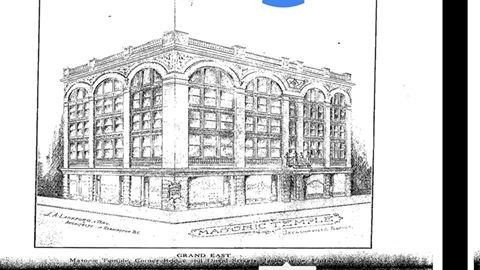
The Prince Hall Masons of Florida answered the call and dispatched their services to the nearly 10,000.00 whom were now homeless. Over 2,300 building were destroyed. A massive relief effort was on the way. G.M. John Harrison Dickerson felt the fire was set intentionally to destroy the LaVilla neighborhood. The building fund was an epic fundraising effort and in 1912 Construction began on the Grounds of 410 Broad St. The architects selected for our building were Victor E. Mark and Leeroy Sheftall.
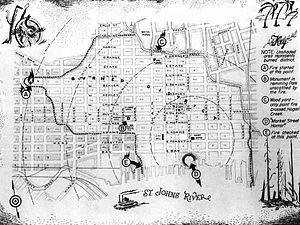
Trolley Car Boycott
In 1901 black entrepreneurs in Jacksonville, Florida established the North Jacksonville Street Railway Town and Improvement Company, a bus company. The city of Jacksonville initially granted the franchise and floated a $150,000 bond to finance construction. But whites in Jacksonville held the principal on the bonds and they forced the black founders to accept the highest bid for construction. Despite all the barriers erected to cripple this new black-owned business, it turned a profit. But white bondholders imposed an unusually short window to pay the interest due on the bonds. In 1908 bondholders foreclosed and took control of the company. (3)
Victory
In 1905 Legislation had passed city ordinances in Jacksonville and Pensacola that enforced Jim Crow laws calling for Trolley Cars to be segregated. In Jacksonville a Black operated trolley car travelled from Lavilla to Panama Park on upper Main St. The 1905 decision of the Florida Supreme Court in Florida v. Patterson represented a victory for the cause of equal citizenship. While courts around the country were upholding segregation, the Florida segregation law was ruled unconstitutional; through newspapers, the reverberations of the exceptional decision were felt nationwide. The case had capitalized on political mobilization of the African American community in Jacksonville , lack uniform of support for the law from the white community, amenable judges, and the law’s especially egregious wording. Nevertheless, success would be shortlived; in 1906, the same court affirmed segregation in Patterson v. Taylor and Crooms v. Schad. While the losses legitimated segregation, all three cases helped to develop a popular rhetoric of rights. Examining the interactions of individuals, the community, and the law around these cases reveals a continuing challenge to the new status quo. The cases’ legacy surfaced both in later political actions of African Americans in Jacksonville and in other court cases that confronted inequality.{4}
Masonic Duty
In 1901 over 50 years before Rosa Parks Andrew Patterson seated himself in the white only car of a black operated trolley car. This set off one the largest boycotts in U.S. History. Rev R. B .Brooks led the boycott. He was the 1st Past Master of Sons of Solomon Lodge. This incident fueled racial tensions further. The arrest of Andrew Patterson and the subsequent Boycott headed by Rev, R,B. Brooks only galvanized the residents of LaVilla.

Rising Above the Ashes
Abraham Lincoln Lewis was born in Madison on March 29, 1865. Although he grew to be a very successful man, Lewis had a difficult start. Lewis was the son of Robert Lewis, a South Carolina blacksmith who was a slave on one of the many plantations in Madison. Both of Lewis’ parents struggled throughout their lives and did not know how to read or write, which was a result of a law that made it a crime to teach slaves to read. However, when the slaves were freed, things began to change. The couple named their son Abraham Lincoln in gratitude for the president who set them free; Lincoln never used this name and instead chose to be called A.L. Lewis. Rising above from the hardships, Lewis dedicated his life to overcome and compensate for the segregation imposed on blacks. {5}
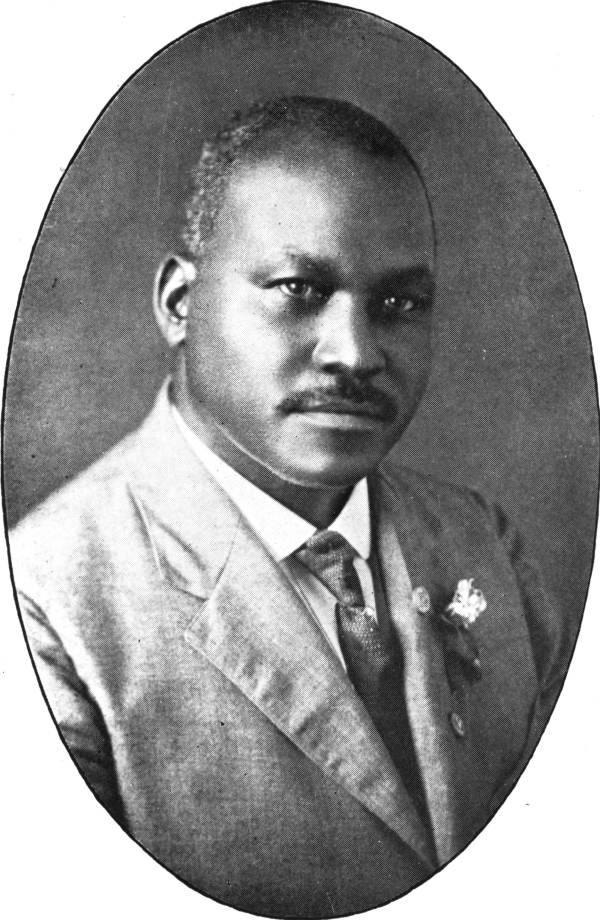
In 1901 after the loss of some many business and homes most of which were not insured. Abraham Lincoln Lewis a Member of the M.W.U.G.L. of Florida together with Reverend E.J. Gregg, E.W. Latson, , A.W. Price, Dr. Arthur W. Smith, J.F. Valentine, and the Reverend J. Melton Waldron formed the “The Afro-American Insurance.
Up until the creation of this insurance company, African Americans found it difficult to purchase life insurance, which was unaffordable to most blacks at the time. The insurance company also served as a financial institution as well. The company is responsible for the creation of American Beach in Nassau County, Florida.

He also founded the African-American Pension Bureau and in 1935, land was purchased on Amelia Island for the black resort called American Beach. On April 22, 1956, the company dedicated its new, million-dollar building at Ocean and Union Street. After over 80 years of serving black southerners, the company closed on July 17, 1987. The 11th Episcopal District of the African Methodist Episcopal Church owns the Building.”


A.L. Lewis went on to become the First African American Millionaire from Florida. The resort known as American Beach had become the leading vacation destination for African Americans during the segregation period He was a tireless Civil Rights leader and philanthropist. He made endowments to Bethune–Cookman University and Edward Waters College.


1 https://www.floridamemory.com 1-12-17
2 Essay G.M. Anthony T. Stafford. History of the Masonic Temple.
3 Nick Douglas’ Finding Octave: The Untold Story of Two Creole Families and Slavery….Michigan Journal of History “To Maintain Our Self-Respect”:
4 The Jacksonville Challenge to Segregated Street Cars and the Meaning of Equality, 1900-1906 By Shira Levine